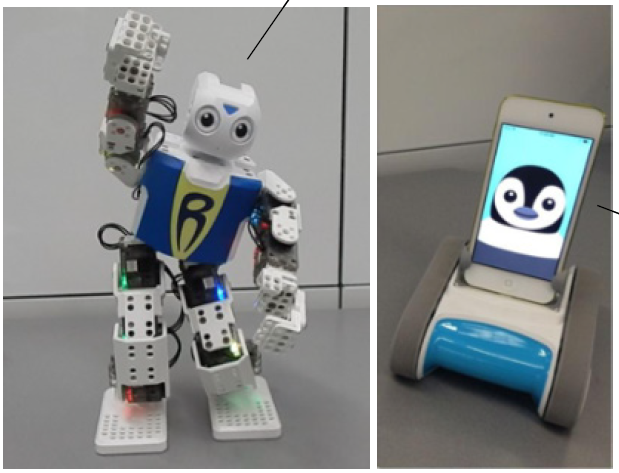Researchers at the George Washington University have invented a novel emotional interaction robot and a robotic therapy for children and particularly for children on autism spectrum. The robotic therapy uses behavioral analysis automation to provide treatment and assessment of emotional communication and social skills of children with autism.
The rapid increase in the population of children with autism spectrum disorder (ASD) has revealed the deficiency in the realm of therapeutic accessibility for children with ASD in the domain of emotion and social interaction. While there have been a number of approaches including several robotic therapeutic systems, the spectral diversity of ASD is vast and there is a need of better parameterized therapeutic tools and frameworks. Human-robot interaction has been a fast growing field of research, having its application domains on social interaction, assistive robotics, behavioral therapy, and educational robotics. Robotic emotions, which enables a robotic entity to function as a social agent, has made consistent progress over the past decades. Study on regulating and expressing emotions through physical or animation-based facial expressions through robotic platforms has become a field of particular interest. However, efficient frameworks are needed for modeling and guiding the emotional interaction between human and robots.
For the interaction with robots to have some implications on the daily lives of humans, the robot should be equipped with its own control mechanism for regulating its emotional status for the purpose of causing positive changes on the emotional status of humans. The system invented by GW researchers includes a robot that uses behavioral analysis automation to provide treatment and assessment of emotional communication and social skills for children with autism. The system generates a dataset including speech signals of one or more speakers, and assigns at least one of a set of labels to each of the speech signals for the one or more speakers. The set of labels includes at least three levels of emotional dimensions. The emotional dimensions include activation, valence, and dominance. The three levels of emotional dimensions include a high state, a neutral state, and a low state.
The current robotic systems used for therapies for children with ASD are mostly teleoperated by human, or performs either processes offline perception without any feedback in the system. The present invention has shown effective in increasing the engagement and interactions significantly. The real-time perception of emotions and its feedback into the system for adaptive and interactive robotic framework can make personalized care possible in therapeutic sessions.

Applications:
1. Improving treatment and assessment of children on autism spectrum
2. Improving human-robot interaction
3. Early childhood education
4. Enabling robotic entities to function as social agents
Advantages:
1. The present invention has shown effectiveness in increasing children’s engagement and interactions.
2. Real-time perception of emotions and its feedback into the system for adaptive and interactive robotic frameworks make personalized care possible in therapeutic sessions.